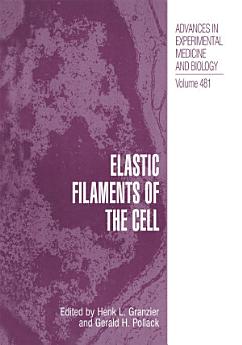Elastic Filaments of the Cell
H.L. Granzier · Gerald H. Pollack
ธ.ค. 2012 · Springer Science & Business Media
eBook
425
หน้า
reportคะแนนและรีวิวไม่ได้รับการตรวจสอบยืนยัน ดูข้อมูลเพิ่มเติม
เกี่ยวกับ eBook เล่มนี้
Elastic filaments refer mainly to titin, the largest of all known proteins. Titin was discovered initially in muscle cells, where it interconnects the thick filament with the Z-line. Titin forms a molecular spring that is responsible for maintaining the structural integrity of contracting muscle, ensuring efficient muscle contraction. More recently, it has become clear that titin is not restricted to muscle cells alone. For example, titin is found in chromosomes of neurons and also in blood platelets. This topic is fast becoming a focal point for research in understanding viscoelastic properties at the molecular, cellular, and tissue levels. In titin may lie a generic basis for biological viscoelasticity. It has become clear that titin may hold the key to certain clinical anomalies. For example, it is clear that titin-based ventricular stiffness is modulated by calcium and that titin is responsible for the altered stiffness in cardiomyopathies. It is also clear from evidence from a group of Finnish families that titin mutations may underlie some muscular dystrophies and that with other mutations chromatids fail to separate during mitosis. Thus, it is clear that this protein will have important clinical implications stemming from its biomechanical role. One aspect of this field is the bringing together of bioengineers with clinical researchers and biologists. Genetic and biochemical aspects of titin-related proteins are being studied together with front-line engineering approaches designed to measure the mechanics of titin either in small aggregates or in single molecules.
ให้คะแนน eBook นี้
แสดงความเห็นของคุณให้เรารับรู้
ข้อมูลในการอ่าน
สมาร์ทโฟนและแท็บเล็ต
ติดตั้งแอป Google Play Books สำหรับ Android และ iPad/iPhone แอปจะซิงค์โดยอัตโนมัติกับบัญชีของคุณ และช่วยให้คุณอ่านแบบออนไลน์หรือออฟไลน์ได้ทุกที่
แล็ปท็อปและคอมพิวเตอร์
คุณฟังหนังสือเสียงที่ซื้อจาก Google Play โดยใช้เว็บเบราว์เซอร์ในคอมพิวเตอร์ได้
eReader และอุปกรณ์อื่นๆ
หากต้องการอ่านบนอุปกรณ์ e-ink เช่น Kobo eReader คุณจะต้องดาวน์โหลดและโอนไฟล์ไปยังอุปกรณ์ของคุณ โปรดทำตามวิธีการอย่างละเอียดในศูนย์ช่วยเหลือเพื่อโอนไฟล์ไปยัง eReader ที่รองรับ






